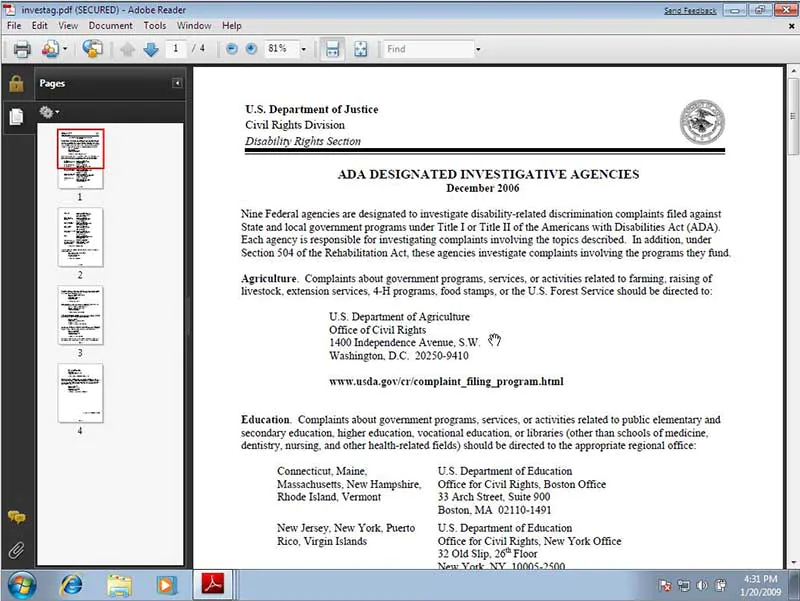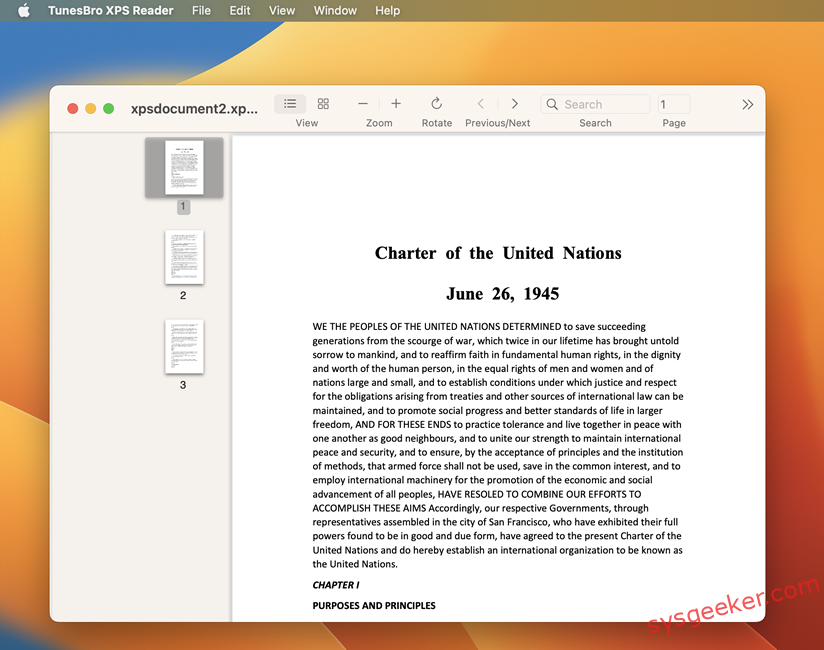Table of Contents
When it comes to viewing XPS files, having the right software can make a world of difference. With the rise in digital documentation, XPS files have become a popular format for sharing and preserving documents. However, not all software is created equal, and finding the best XPS viewer can be a daunting task. That’s why we’ve curated a list of the best 7 XPS viewers online to help streamline your document viewing experience. Whether you’re a professional who frequently works with XPS files or a casual user looking for a reliable viewer, this blog post will provide you with all the information you need to make an informed decision.
What Can an XPS Viewer Do?
Before diving into the specifics of choosing the best XPS viewer, let’s first explore the capabilities of such software. An XPS viewer should offer the following:
1. Ability to Open and View XPS Files: The primary function of an XPS viewer is to open and display XPS files accurately. It should maintain the document’s formatting, layout, and graphics, ensuring a seamless viewing experience.
2. Annotation and Markup Features: A good XPS viewer should provide tools for annotating and marking up XPS files. This includes adding comments, highlights, stamps, and other visual elements to enhance collaboration and document management.
3. Conversion and Export Options: Sometimes, you may need to convert XPS files into other formats for compatibility or editing purposes. An excellent XPS viewer should allow you to convert XPS files to PDF, Word, or image formats without compromising quality.
How to Choose the Best XPS Viewer?
Now that we understand what an XPS viewer can do, let’s explore the key factors to consider when choosing the best one for your needs:
1. User-Friendly Interface: Look for an XPS viewer with an intuitive interface that is easy to navigate. A clutter-free workspace and well-organized menus will enhance your productivity and overall user experience.
2. Compatibility: Ensure that the XPS viewer is compatible with your operating system. It should seamlessly integrate into your workflow without any compatibility issues.
3. Feature Set: Assess the feature set of each XPS viewer and determine which ones are essential for your specific requirements. Consider features such as annotation tools, document conversion, search functionality, and collaboration features.
Best 7 XPS Viewer Recommendations
1. Adobe Acrobat Reader
Adobe Acrobat Reader is a well-known and widely used PDF viewer, but it also supports XPS file format. With its comprehensive tools and features, Adobe Acrobat Reader offers an excellent XPS viewing experience. The interface is user-friendly, allowing you to navigate through XPS files effortlessly. The annotation and markup features are robust, making it easy to add comments, highlights, and stamps to XPS files. Adobe Acrobat Reader also offers conversion options, allowing you to convert XPS files to PDF or other formats.

Pros:
– User-friendly interface
– Robust annotation and markup tools
– Conversion options
Cons:
– Can be resource-intensive
– Some advanced features require a subscription
2. TunesBro XPS Reader
TunesBro XPS Reader is a lightweight and minimalistic XPS viewer that focuses on simplicity and speed. It’s designed to be fast and efficient, making it an excellent option for users who prioritize performance. It also supports both XPS and PDF files, ensuring compatibility with a variety of document formats.
While it may not have the extensive feature set of other XPS viewers, TunesBro XPS Reader offers a straightforward and hassle-free viewing experience. Bookmarking and annotations are vital features for TunesBro XPS Reader, it acn allow users to not only remember where they left off but also to interact with the content in a deeper way.

Pros:
– Lightweight and fast
– Supports both XPS and PDF files
– Simple and user-friendly interface
Cons:
– Limited annotation and markup features
– Lacks advanced functionality
3. Windows XPS Viewer
For Windows users, the built-in XPS Viewer is a reliable option. It comes pre-installed on most Windows operating systems, making it easily accessible for viewing XPS files. The Windows XPS Viewer provides a straightforward interface and basic viewing capabilities. While it may not have advanced features like annotation or conversion options, it offers a simple and efficient way to view XPS files.
Pros:
– Pre-installed on Windows operating systems
– Simple and easy to use
– Lightweight and fast
Cons:
– Limited features and functionality
– Lacks advanced annotation tools
4. MuPDF
MuPDF is a lightweight and open-source XPS viewer known for its speed and efficiency. It provides a minimalistic interface with essential viewing tools. MuPDF supports XPS files as well as other document formats like PDF and EPUB. While it may not have advanced features, MuPDF’s focus on speed and simplicity makes it a popular choice for users who value performance.
Pros:
– Lightweight and fast
– Open-source with an active development community
– Supports multiple document formats
Cons:
– Limited features and customization options
– Requires some technical knowledge for advanced usage
5. STDU Viewer
STDU Viewer is a versatile document viewer that supports various formats, including XPS. It provides an intuitive and customizable interface, allowing you to configure the display to your preferences. STDU Viewer offers advanced annotation features, making it suitable for users who require extensive markup capabilities. It also supports document navigation through bookmarks and table of contents.
Pros:
– Intuitive and customizable interface
– Extensive annotation and markup features
– Supports multiple document formats
Cons:
– Limited document conversion options
– Some advanced features require a paid license
6. Xodo
Xodo is a feature-rich PDF viewer that also supports XPS files. It offers a modern and intuitive interface with a wide range of annotation and markup tools. Xodo allows for collaborative document editing, making it an excellent choice for team projects and remote work. The app is available on various platforms, including desktop, mobile, and web, providing seamless access to your XPS files.
Pros:
– Modern and intuitive interface
– Extensive annotation and collaboration features
– Cross-platform compatibility
Cons:
– Limited XPS-specific features compared to PDF functionality
– Some advanced features require a subscription
7. Nitro Reader
Nitro Reader is a powerful PDF viewer that also supports XPS files. It offers a range of features and tools for viewing and annotating XPS files. Nitro Reader provides an intuitive interface with a user-friendly design. It supports conversion to and from various file formats, allowing you to work with XPS files more flexibly.
Pros:
– User-friendly interface
– Comprehensive viewing and annotation tools
– Conversion options
Cons:
– Some advanced features require a paid license
– Can be resource-intensive
Comprehensive Comparison of Each Software
| Software | Free Trial | Price | Ease-of-Use | Value for Money |
|---|---|---|---|---|
| Adobe Acrobat Reader | No | Free | Easy | High |
| SumatraPDF | N/A | Free | Easy | High |
| Windows XPS Viewer | N/A | Free | Easy | High |
| MuPDF | N/A | Free | Easy | High |
| STDU Viewer | N/A | Free | Moderate | High |
| Xodo | No | Free | Moderate | High |
| Nitro Reader | No | Free | Easy | High |
Our Thoughts on XPS Viewers
In conclusion, choosing the best XPS viewer depends on your specific needs and preferences. If you’re looking for a comprehensive solution with advanced annotation and conversion capabilities, Adobe Acrobat Reader or Xodo would be excellent choices. For users who prioritize speed and simplicity, SumatraPDF or MuPDF may be more suitable options. Windows XPS Viewer is a reliable built-in option for Windows users. STDU Viewer offers extensive customization and navigation features, while Nitro Reader provides a powerful and feature-rich experience. Consider the features, user interface, and overall value for money when making your decision.
5 FAQs about XPS Viewers
Q1: Can I convert XPS files to other formats using an XPS viewer?
A: Yes, some XPS viewers offer conversion options that allow you to convert XPS files to formats like PDF or image files.
Q2: Does the choice of XPS viewer affect the quality of XPS file rendering?
A: In most cases, the quality of XPS file rendering is not significantly affected by the choice of XPS viewer. However, certain viewers may offer better rendering capabilities and preserve the original document’s fidelity.
Q3: Can I collaborate on XPS files using an XPS viewer?
A: Some XPS viewers, like Xodo, offer collaboration features that allow multiple users to annotate and edit XPS files simultaneously.
Q4: Are there any XPS viewers specifically designed for Mac users?
A: While some XPS viewers are primarily designed for Windows users, there are options available for Mac users as well. Make sure to check the compatibility before choosing an XPS viewer for your Mac.
Q5: Is it necessary to install an additional XPS viewer if I already have a PDF viewer?
A: Not necessarily. Some PDF viewers also support XPS files, so you may be able to view XPS files using your existing PDF viewer without the need for a separate XPS viewer. However, dedicated XPS viewers may offer more specialized features for working specifically with XPS files.
In Conclusion
Choosing the best XPS viewer depends on your specific requirements, such as the desired feature set, compatibility, and user interface. Consider factors like annotation capabilities, conversion options, and collaboration features when making your decision. The recommended XPS viewers in this blog post offer a range of options to suit different needs and preferences. Analyze their pros and cons, try out the free versions or trials, and select the XPS viewer that best aligns with your workflow and enhances your document viewing experience.
